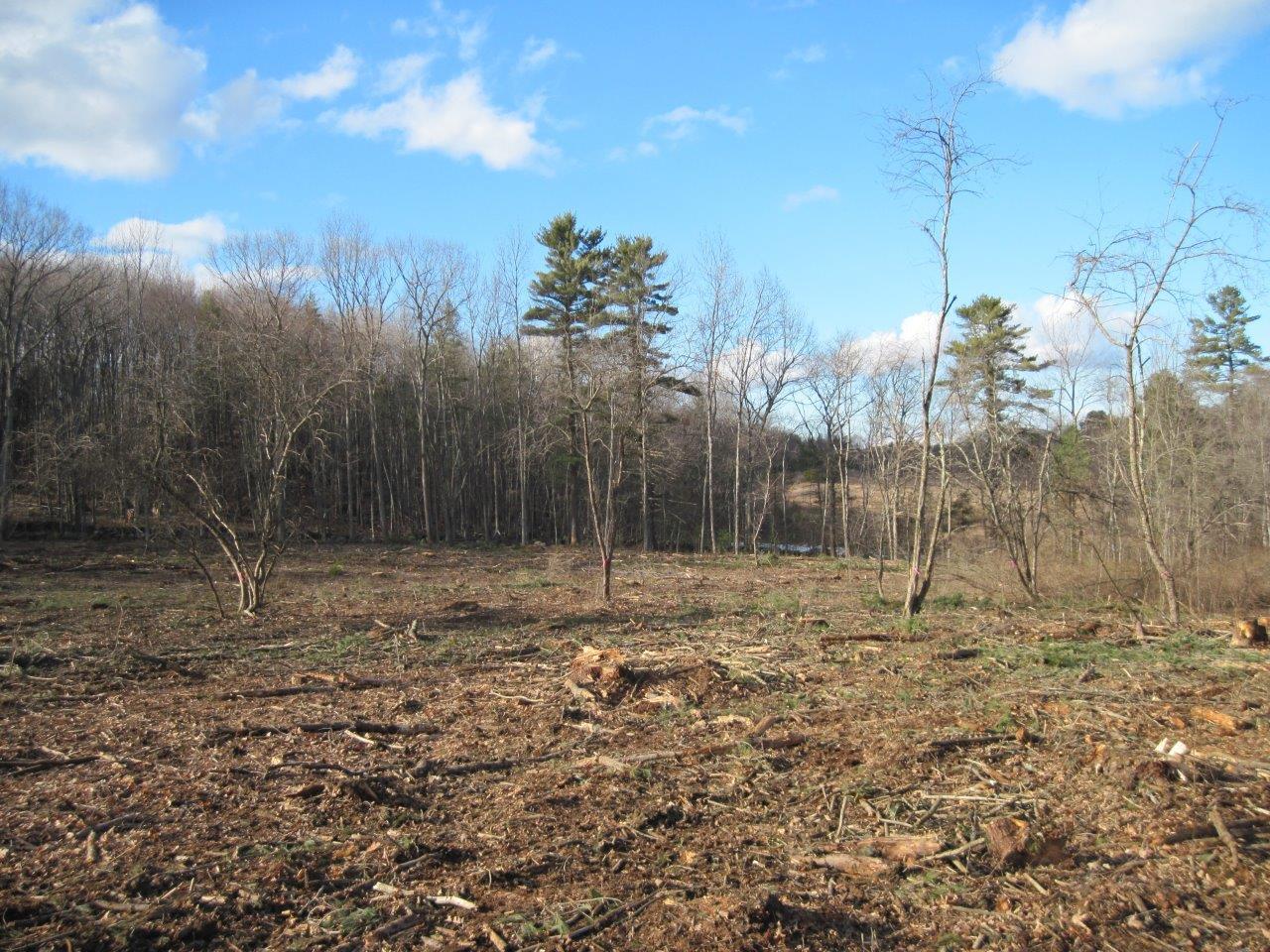- Tags:
- Stewardship

Old Orchard , New Rabbit Habitat Hills Family Forest, Durham NH
The New England Cottontail rabbit has the potential of being placed on the federal endangered species list if its numbers don’t increase over the next few years. If the rabbit hits the list it could impact future management activities and limit some opportunities on public and private land. So the wildlife community, including the Forest Society, the Natural Resource Conservation Service, the New Hampshire Fish and Game Dept.(NHF&G), the Wildlife Management Institute, The Nature Conservancy, the NH Association of Conservation Districts, and others, has been involved in taking some positive actions to see that the rabbit stays off the list.
These conservation partners have been targeting conservation lands in the seacoast within the normal range of the rabbit and where they can create what we call “rabbit habitat.” This involves removal of overstory trees and replacing them with shrubs and brush which provides cover for the rabbits. Several of these projects have been in the works on the seacoast, generally in places that are off the beaten path from roads, trails, and houses.
In 2011, the NHF&G created a 20-acre opening on their Bunker Lane Tract in Durham. One of the Forest Society’s newer reservations, the Hills Forest, sits adjacent to the F&G parcel and seemed like a natural opportunity to expand this new area of rabbit habitat. So, this spring the Forest Society hired a logging contractor to remove all the low quality white pine, red oak, beech, and hickory from a five acre grown in orchard and return it to a very open condition (yes folks it was a clearcut). Following the harvest the area was seeded using a special mix of shrub seeds provided by NHF&G. Over the next few years the land should grow into a thick tangled brushy state loved by the rabbits. But that has raised a slight problem for the bunnies; it will take too long for the desired level of brush cover to develop and the rabbits need their acres of thickets now.
After a more thorough review of the surrounding areas by the project managers, we have located another thirteen acres almost adjacent to the original five that will soon receive a slightly different type of treatment. It’s “different” because to our knowledge it’s not a treatment we have ever prescribed within a forest before. Coming from the Pinchot school of ‘the greatest good for the greatest number over the longest term’ it goes against a forester’s grain when the utility of the wood fiber is lost. But in this case, the resource values go well beyond the value of some low quality trees in a nearly inaccessible location. The trees on these acres will be cut and left. There will be no trucking of product to the mills, no chips sent to the local energy producers and no firewood for the stoves next winter. In this case, trees are not removed to create an opening in the woods that will grow into habitat; the felled trees themselves are the habitat. Their tangled crowns and ground level boles will provide the rabbits with the immediate cover they need to thrive.
We feel very good about this New England Cottontail project. There are only a few landowners in the State who have the land base, the management flexibility, and the mission-driven mandate to accommodate a project like this.
